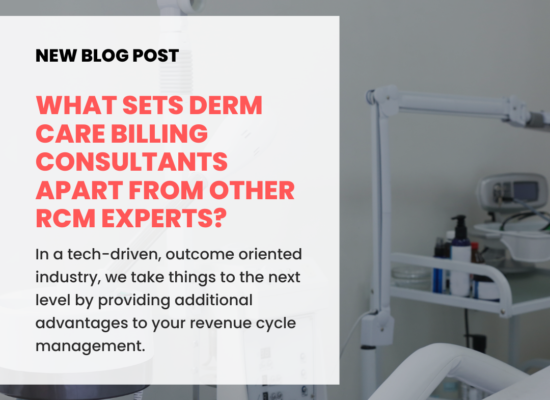Let’s Talk Staffing! Is there an ideal staff to provider ratio in dermatology?
The practice of dermatology is many things. It is patient care and services such as diagnosis and procedures, it is surgical after care, ongoing disease management care and it’s also one time visits for specialized procedures. What is also true, whether you are providing one time or ongoing care, is that you’ll require support staff to help run your practice and those support staff earn a salary. At the end of the day, a dermatology practice is also a business and you have a fiduciary as well as a professional responsibility to manage your practice well. Is there a way for you to determine an ideal staff to provider ratio that doesn’t leave you over (or under) staffed? What is the best use of your dollars and “sense?” Let’s talk staffing.
On a daily basis your staff manage the administrative side of your business, helping to move patients through the practice effectively and efficiently for each of the providers in your practice. To ensure maximum efficiencies gained while maintaining appropriate staffing levels, you’ll have to consider factors such as workflow, the kind of staff you employ and weigh their costs against your bottom line. The first thing we invite you to consider is the narrative around staffing. Rather than considering staffing an expense, assume they are an investment in your business. Cutbacks to staff generally result in employees working harder, not happier, and significant cutbacks could result in poor customer service and follow up, impacting your practice in a significantly more harmful way regardless of how good a practitioner you are. Poor staffing ratios might also result in an increased administrative workload for you and that’s just not a good use of your time and/or skill sets, perhaps even resulting in you seeing fewer patients overall.
Considerations:
Workflow
We mentioned this already. Specifically, how can you see more patients but not rush their procedures or negatively impact the patient experience? Look to see WHO does WHAT. Perhaps it makes sense to hire one additional nurse or a medical resident who can help prepare a patient for a procedure, have exam rooms and operating surgical rooms fully prepped and ready and perhaps even a preliminary diagnosis in hand so that when you see the patient they are ready to have their procedure.
Administrative staff
Staff that are fully trained can optimize billing and paperwork, if they are also working in tandem with nursing and/or customer service staff that collect accurate patient information and charting and tracking procedures are in place. Having specialists in billing for example (which involves extensive coding knowledge) might be more advantageous to your bottom line than repeated claims denials due to errors and inconsistencies made by inefficient staff.
The reality is staffing is one of your largest expenses but it’s not a place you want to cut corners. It impacts patient care, the quality of care and indeed, the entirety of the clinic experience. What can you do? According to various studies and work completed in the field you might undertake the following:
- Start by looking at the historical data for your practice and measuring the efficiency and productivity of your staff over time. If you don’t already have that data you could look for comparably sized practice information online.
- Factors to consider include the number of patients you can see per hour/per day on a 1.1 ratio vs. say a 2.1 ratio (seeing a patient with an assistant.)
- You might find that while the cost of an assistant salary is a fixed annual expense that concerns you, the amount of potential increased earnings through efficiencies gained (or lost potential earnings) due to inefficiencies, can actually be measured exponentially.
- Some research suggests that understanding your “FTE” – Full time equivalency (the equivalent of one person working full time) and comparing that against the number of average claims that can be processed, is another way of helping you to determine appropriate staffing levels.
According to Physicians Practice FTE is measured as follows:
- 8 hours/day
- 5 days/week
- 52 weeks/year; and
- 2,080 hours/year
Examples:
- One person working 8 hours per day, 5 days per week = 1 FTE
- Two people each working 4 hours per day, 5 days per week = 1 FTE
Knowing your total number of labour hours over the course of one year, divide that number by 2,080 to understand your number of FTE’s in your practice. The organization goes on to suggest that the average medical biller can process about 10,000 claims annually. Doing the math will give you at least an idea of your costs although of course, that’s for just one type of employee. You would have to do similar calculations for each of the staff categories of staff you employ to gain a more fulsome understanding of your final costs.
Of course if all of this sounds like a great deal of work; work that will take you away from the more important job of performing patient care, and/or managing staff ranks highly on your list of pain points, outsourcing some of the work of your medical practice might make good sense. We’re medical billing specialists at DermCare. Utilizing our services is a predictable and fixed cost that guarantees accuracy, efficiency and effectiveness – and requires no hands-on staff management by you! Work with the medical professionals required to meet your patient’s expectations and that recognizes your medical expertise and leave the billing to us! That’s good “staffing.”





